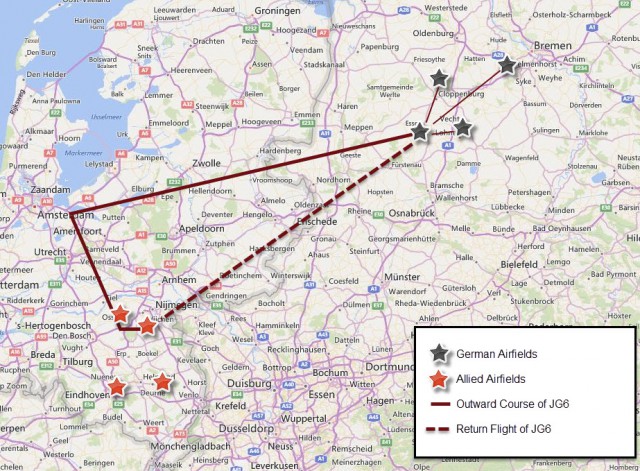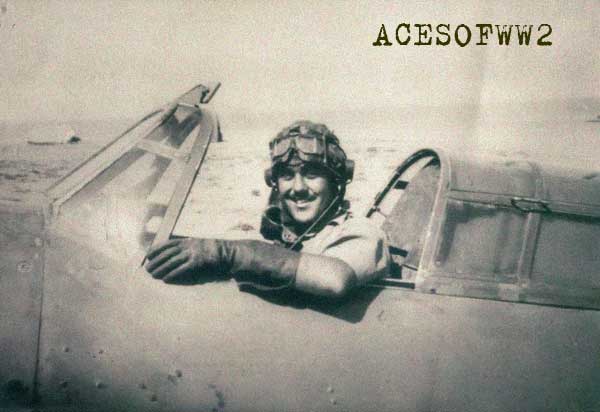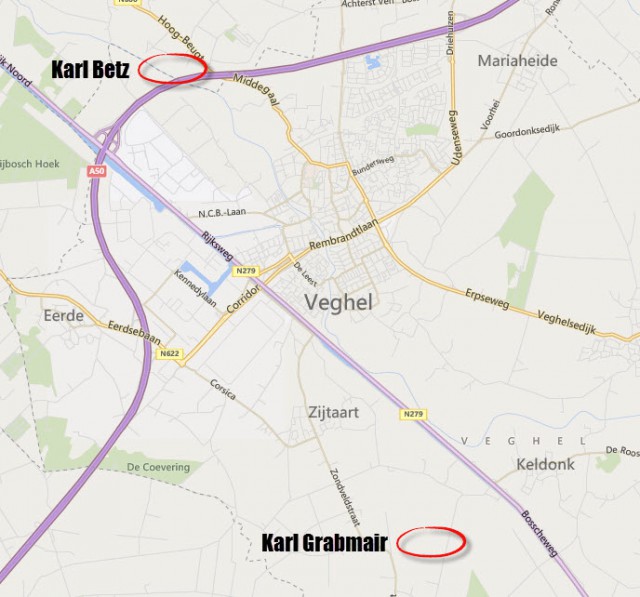The search for two crashed German fighters, shot down over Veghel (Netherlands) on January 1st. 1945.
Operation Bodenplatte
On new years day 1945 the German Luftwaffe launched operation “Bodenplatte”. Its goals was to regain air superiority by destroying all allied airfields along the frontline in the Netherlands, Belgium and northern-France. Bodenplatte was supposed to take place on December 16th 1944 to support the German attack in the Ardennes (Battle of the Bulge) that started that day.
Due to bad weather the attack was postponed to the morning of January 1st 1945. Around 1000 fighters and bombers participated in the attack.
During this attach a Messerschmitt BG109G-10 and a Fockw Wulf FW190 A-8 crahsed in the vicinity of
Veghel. These fighters were flown by the 24 year old Uffz Karl Bets of the 10/JG and the 21 year old Luit. Karl Grabmair of the 5/JG6. Both pilots were killed during the crash.
The morning of January 1st 1945
Both pilots belonged to JG6 (Jagdgeschwader 6). The objective of JG6 was Volkel Airfield, known to the allies as B-80. There were 78 BF108 and FW190 fighers assigned to this task.
At 08:19h the armada took off from the German airfield Bissel, they were preceded by a number of JU88 who were guiding (lotsen) the airplanes towards the targets.
They flew in a straight line to Spakenburg, there a course of 178 was taken to Veghel. Arriving over Veghel, by following the railroad, they would arrive at Volkel Airfield. In order not to be spotted they flew at low altitude, around 100m.
Map of the attack [Via]
On their way to Veghel JG6 passed over the allied airfield between Heesch and Nistelrode (B-88). Most probably the Luftwaffe did not know this airfield existed. The Spitfires stationed there took off immediately and went on the offensive. Above Veghel intense air to air combat took place in which at least 2 but possibly 3 or 4 German fighters were shot down. The sources differ on the the numbers.
Karl Betz
Unteroffizier Karl Betz was the first Victim. His airplane was most probably shot down by Flight Officers Cameron of the 401 Squadron.
During the aerial engagement JG6 lost its bearings. Heavy black smoke at the horizon was mistaken for Volker airfield which was attacked. It turned out later that they attacked Eindhoven airfield and not Volkel.
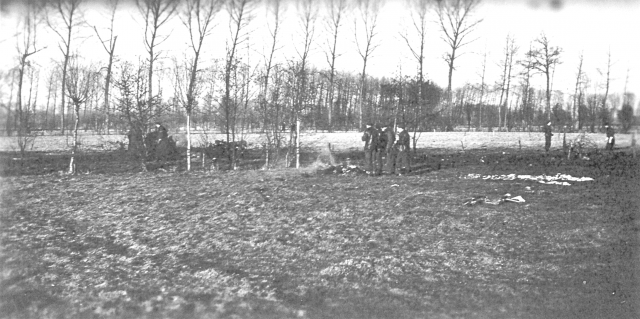
The combat report of Flight Officer Cameron, involved in the aerial engagement over Veghel:
The airplane flown by Betz, after being hit, struck the top of a tree at the western outskirts of Veghel, continued on for a couple of 100 meters and then crashed in a field.
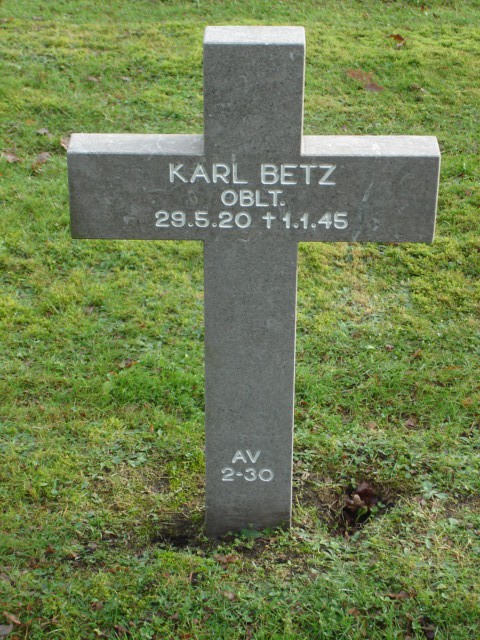
According to eye witness accounts, Betz tried to get out of the stricken airplane but only succeeded at the last moment before his plane hit the ground. He was beyond help and died quickly. He was given a temporary burial near the railroad, after which he was reburied at Ysselsteyn German Cemetery, plot AV-30.
Karl Grabmair
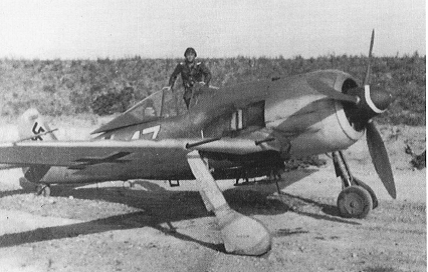
Luitenant Karl Grabmair was most probably shot down by Flight Luitenant Don Gordon. He returned early to base because of engine trouble.
Flight Lieutenant Don Gordon [Via]
His report combat:
Grabmairs airplane crashed on the east side of Veghel. He got out of his plane but lacking altitude his parachute didn’t open, he died on hitting the ground. Grabmair was buried temporarily nar the wreckage, he as later reburied at Ysselsteyn German Cemetery, plot AV-139.
May 5th 2009
Because there was so much confusion regarding the crash site the BF109G-10 of Karl Betz, I searched for the crash site using a metal detector.
Eyewitness accounts and other sources led to a crash site behind the Zwanenburg estate, between Veghel and Dinther.
After permission by the owner I started my research. The owner told me that in the 1980s a man from Veghel had already searched for the location and this person found bits of aluminium near a ditch. Before long Marcel found bits of airplane, confirming the location. After which I did a thorough search of the area. The point of impact was marked by a concentration of aluminium, Plexiglas, reinforced glass and iron.
The next day I was able to search the grounds again, the owner kindly postponed plowing the field for a day!
In total I found over 80 Kg of aluminium and iron. Some of the artifacts found are worth mentioning and contributed to the identification of the plane.
- Parachute harness ID
- Lever from the cockpit to operate the windscreen wipers
- Rubber fuel pipe with coupling
- Cockpit instrument
- Spark plugs
- Flare
- Electrical equipment housing
With these artifacts it is now become certain that a BF109-G10 had been found. There is now very little doubt that this is the crash site of Karl Betz.
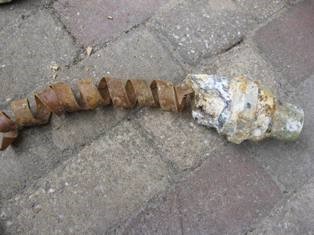
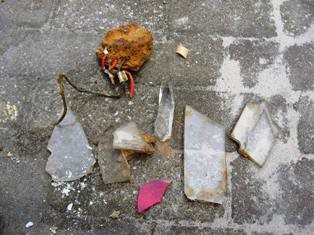
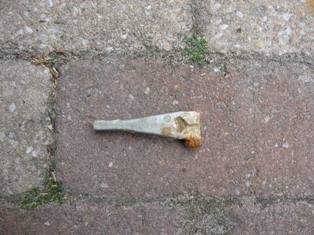
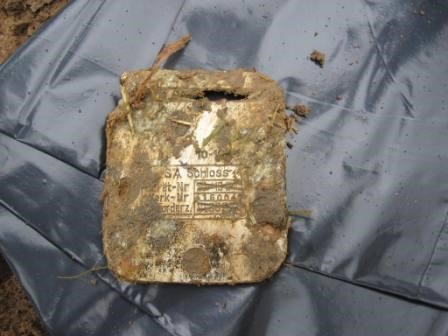
The search for the crash site of the Focke Wolf 190, flown by Grabmair is still ongoing.
Sources used:
Manrho en Pultz/Bodenplatte
Documentatiegroep Volkel
Various Eye witnesses
Written by Marcel Hermes, originally for the Heemkundekring Vechele.
Reproduced with permission on War History Online
